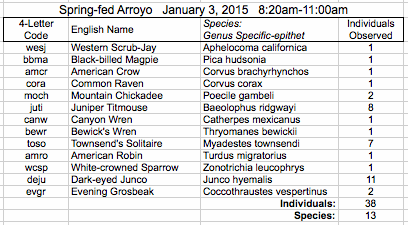
Plain List as PDF

Date: January 3, 2015
Location: Spring-fed Arroyo, Dixon
Number of Species: 13
Time: 8:20-11:00AM
Weather: Clear, calm. Stream Bed Frozen. 1-4 inches Snow
Number of Observers: 2
Plain List (Scroll Down for Picture List):

Plain List as PDF
| English Name: Genus species: | Comments | Photos |
| Jays, Crows and their Allies | ||
| Western Scrub-Jay Aphelocoma californica 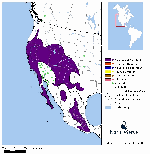 Enlarge Map External Sites: Cornell USGS Image Search | Common in all area habitats. Note white throat and faint white eyebrow. Also brownish-gray back. Distinguished from the Pinyon Jay by longer tail and solitary behavior. Number of Individuals Observed:1 | 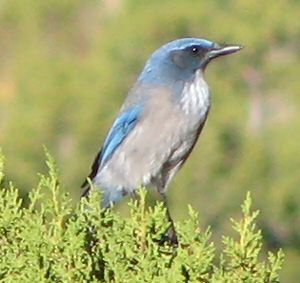 Arroyo la Mina 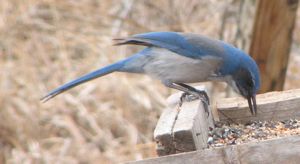 Cañoncito |
| Black-billed Magpie Pica hudsonia 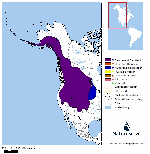 Enlarge Map External Sites: Cornell USGS Image Search | Unmistakable large black and white bird with very long tail. Number of Individuals Observed:1 | 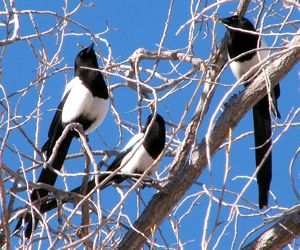 El Bosque |
| American Crow Corvus brachyrhynchos 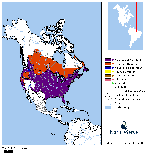 Enlarge Map External Sites: Cornell USGS Image Search | At times difficult to distinguish from Common Raven as the largest Crows are nearly as big as the smallest Ravens. By sound, the crow's "caw" is familiar. In flight, the crow's tail is often square or rounded. Crows are very social and often appear in noisy groups. Bill smaller and thinner than that of the Raven. Number of Individuals Observed:1 | 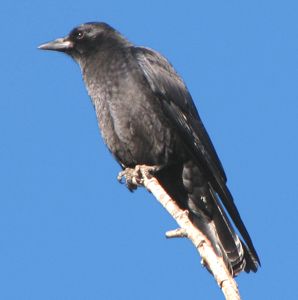 El Bosque |
| Common Raven Corvus corax 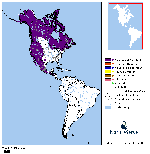 Enlarge Map External Sites: Cornell USGS Image Search | At times difficult to distinguish from American Crow. By sound, a throaty chortle or shout. In flight, the tail often appears wedge shaped. Ravens are often solitary, but sometimes appear with a few other individuals. Often soars like a hawk. Crows do not. Bill is thick and heavy. The throat is shaggy compared to the Crow. Breeding pairs perform synchronized flight high overhead. Number of Individuals Observed:1 | 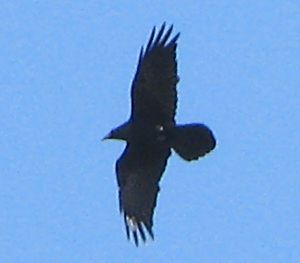 El Bosque 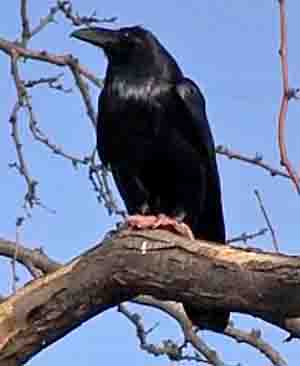 Camino de los Marquez, Santa Fe |
| Chickadees and their Allies | ||
| Mountain Chickadee Poecile gambeli 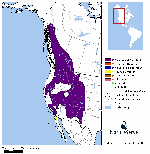 Enlarge Map External Sites: Cornell USGS Image Search | Very similar to Black-capped Chickadee in appearance and vocalizations. Mountain Chickadee has distinctive white eyebrow. Sound: Fee-bee-bee instead of fee-bee. Black on throat generally more extensive than shown here. Number of Individuals Observed:2 | 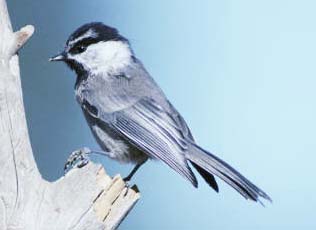 Photo: Dave Menke USFWS Oregon 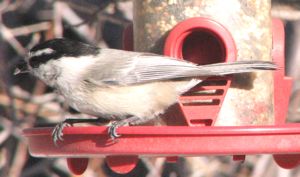 Dixon 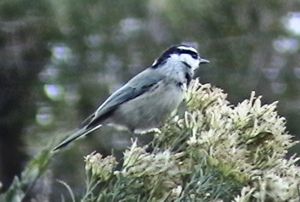 Pot Creek, Talpa, NM |
| Juniper Titmouse Baeolophus ridgwayi 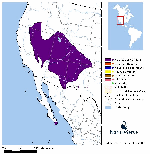 Enlarge Map External Sites: Cornell USGS Image Search | Generally seen in Juniper trees, the crest on the head is distinctive. Some of its vocalizations similar to Chickadee. Often detected by soft woodpecker-like tapping on branches. Number of Individuals Observed:8 | 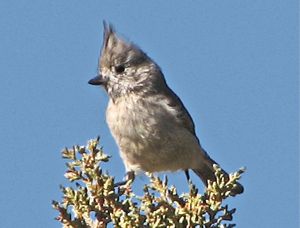 Camino Lejo, Santa Fe |
| Wrens | ||
| Canyon Wren Catherpes mexicanus 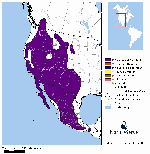 Enlarge Map External Sites: Cornell USGS Image Search | More often heard than seen. It's song is a very distinctive series of descending notes: tew, tew, tew, tew, tew, tew, tew. Usually sings from rock perches high on canyon walls. Occasionally seen in riparian areas sounding its very bright, shrill, trilled "breet". Note: White throat with rufous belly. Number of Individuals Observed:1 | 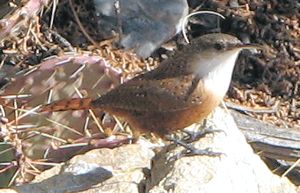 Near Harding Mine |
| Bewick’s Wren Thryomanes bewickii 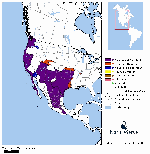 Enlarge Map External Sites: Cornell USGS Image Search | It's very prominent, white eyebrow is distinctive. Most often seen at transition from Piñon-Juniper to agricultural or riparian areas. Song similar to Song Sparrow, but is "buzzier" and consistently ends on a clear trill. Number of Individuals Observed:1 | 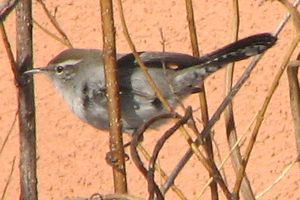 El Bosque |
| Thrushes and their Allies | ||
| Townsend’s Solitaire Myadestes townsendi 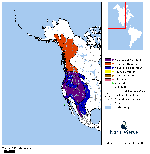 Enlarge Map External Sites: Cornell USGS Image Search | This bird is most often observed sitting in the tops of trees sounding a repeated, high, slow whistle. Gray all over with white on sides of tail. Fluttery in flight, with cream-colored bands running the length of each wing on the underside. Number of Individuals Observed:7 | 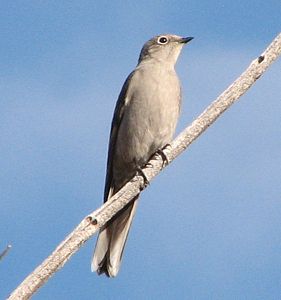 Harding Mine |
| American Robin Turdus migratorius 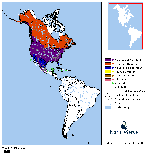 Enlarge Map External Sites: Cornell USGS Image Search | Best known American Bird. Note reddish breast, light colored bill and large white split eye-ring. Number of Individuals Observed:1 | 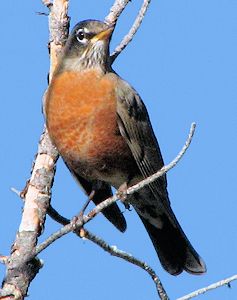 El Bosque |
| Sparrows and their Allies | ||
| White-crowned Sparrow Zonotrichia leucophrys 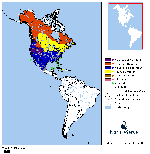 Enlarge Map External Sites: Cornell USGS Image Search | Adult (Upper Photo): Distinctive black and white stripes on head. Light colored bill. Clear breast and belly. Juvenile (Lower Photo): Head stripes brown and gray. Number of Individuals Observed:1 | 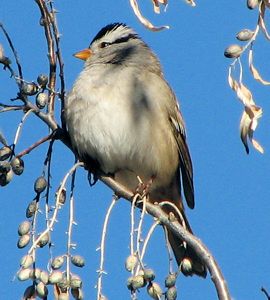 Dixon 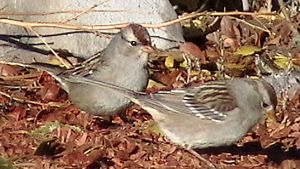 Dixon |
| Dark-eyed Junco Junco hyemalis 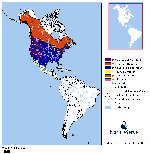 Enlarge Map External Sites: Cornell USGS Image Search | In winter, there are 5 sub-species of Dark-eyed Junco in our area. Many have a full black or gray hood. All have a dark eye set in dark plumage. Almost always in flocks of 10-20 individuals. Identifiable by a very "dry" sounding "tck-tck" and by white showing on the sides of the tail, especially in flight. Do a an Image Search (at left) to get an idea of the great variation in the plumage of this species. Number of Individuals Observed:11 | 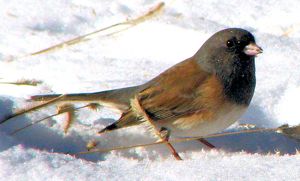 Dixon 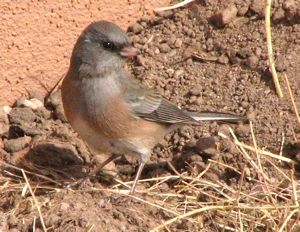 Dixon |
| Finches and Old World Sparrows | ||
| Evening Grosbeak Coccothraustes vespertinus 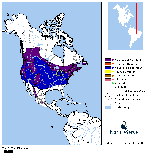 Enlarge Map External Sites: Cornell USGS Image Search | Number of Individuals Observed:2 | 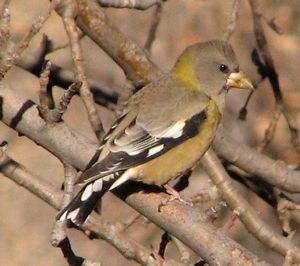 Dixon 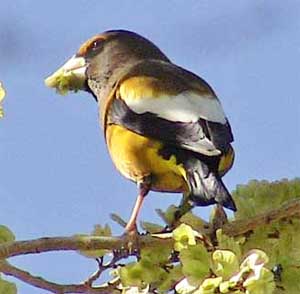 Paseo de Peralta, Santa Fe |